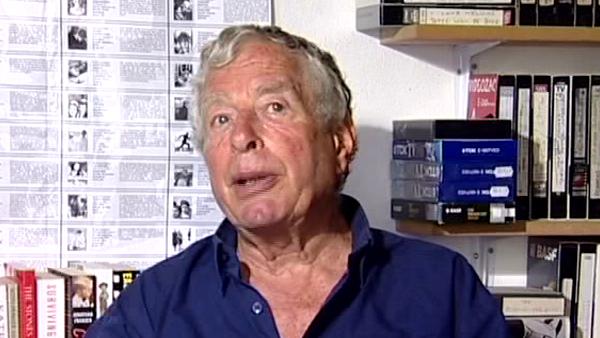NEXT STORY

Something for Everyone: Cast and story
RELATED STORIES

NEXT STORY

Something for Everyone: Cast and story
RELATED STORIES



The rest was exteriors and some interiors in an actual villa which actually is... it's another castle... at the foot of the hill where the magnificent castle stands is another castle. One is called Neuschwanstein and the one is called Hohenschwangau. We shot in that other castle, which... quite a lot of shooting took place in the other castle, which was very natural interiors. Then there's a lake and there's a big scene of boats on the lake. She throws a big party. It's quite an extensive... quite an elaborate film. It was made with relatively small means, as far as equipment goes, but perfectly adequate.
We had a very good German support crew. I had my English assistants with me, or some of them. We had a German support crew, and the Germans, I discovered, very often wore several hats. The chief electrician might also be the grip, and... not the dolly grip because that's a special job. But they overlapped a lot and if somebody was needed to hold the boom for one scene, it might have two microphones or something, then, of course, they stepped in. They did the carpentry. They did the... They did everything. And they worked as a team and I think they were paid... the team was paid and they shared it out among themselves. It was a very, very successful arrangement. I found, working in Germany generally, that the German crews and the German transport particularly, was very compact. The crews were small and the transport was compact. Whereas, in America, I've often been told, how can you make a movie without a 40-footer, which is this ginormous articulated truck. In Germany they do the same thing with two Volkswagen buses.
Born in Germany, cinematographer Walter Lassally (1926-2017) was best known for his Oscar-winning work on 'Zorba the Greek'. He was greatly respected in the film industry for his ability to take the best of his work in one area and apply it to another, from mainstream to international art films to documentary. He was associated with the Free Cinema movement in the 1950s, and the British New Wave in the early 1960s. In 1987 he published his autobiography called 'Itinerant Cameraman'.
Title: "Something for Everyone": Working with German crews
Listeners: Peter Bowen
Peter Bowen is a Canadian who came to Europe to study and never got round to heading back home. He did his undergraduate work at Carleton University (in Biology) in Ottawa, and then did graduate work at the University of Western Ontario (in Zoology). After completing his doctorate at Oxford (in the Department of Zoology), followed with a year of postdoc at the University of London, he moved to the University's newly-established Audio-Visual Centre (under the direction of Michael Clarke) where he spent four years in production (of primarily science programs) and began to teach film. In 1974 Bowden became Director of the new Audio-Visual Centre at the University of Warwick, which was then in the process of introducing film studies into the curriculum and where his interest in the academic study of film was promoted and encouraged by scholars such as Victor Perkins, Robin Wood, and Richard Dyer. In 1983, his partner and he moved to Greece, and the following year he began to teach for the University of Maryland (European Division), for which he has taught (and continues to teach) biology and film courses in Crete, Bosnia, and the Middle East.
Tags: filming, crew, Germans, castle
Duration: 1 minute, 47 seconds
Date story recorded: June 2004
Date story went live: 24 January 2008